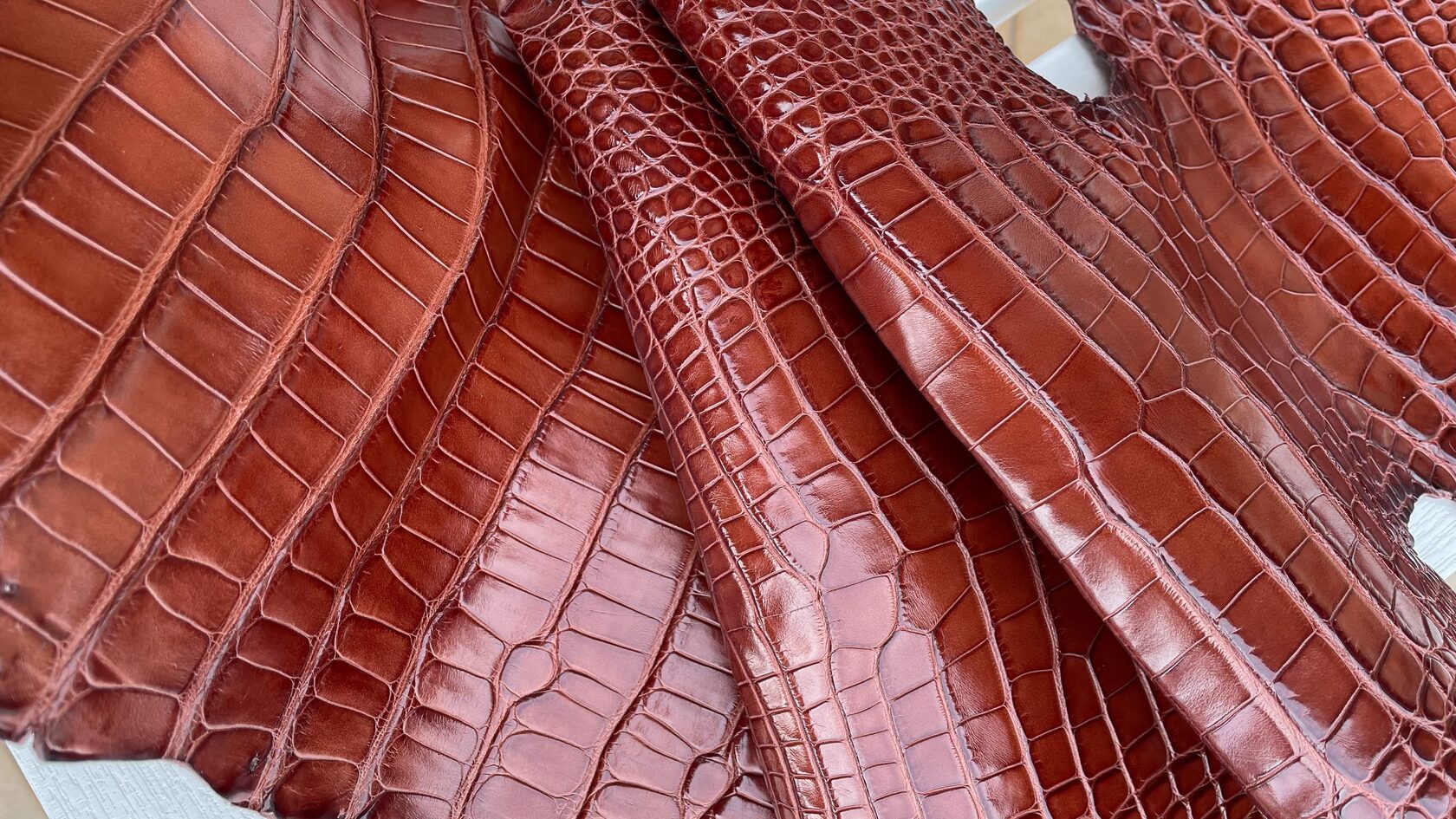
Understanding Crocodile Skin Density
The density of crocodile leather, often referred to as elasticity, is a key parameter influencing the type and quality of leather dressing. It's essential to distinguish between thickness and density, as these terms hold distinct meanings in the context of exotic leather.
- Tail vs. Tummy Preferences:
"I don't want a tail; it's stiff and thick! I only want a tummy — they are always soft!"
- Comparing Densities:
"Which is less dense — alligator or Nile crocodile?"
- Porosus Softness:
"And the porosus must be the softest of all since it's so expensive?"
- Crocodile vs. Cattle:
"Is crocodile leather as dense as cattle or thinner?"
Clarification: The term "flexibility of skin" implies the dressing process, including thickness, elasticity, and related factors.
Common Misconceptions
❌ Not About Breed:
The density of crocodile skin is not determined by the breed of the crocodile.
❌ Not About Specific Parts:
It's not dependent on a specific part of the crocodile skin.
❌ Not About Skin Types:
The density is unrelated to the type of crocodile skin.
❌ Not About Origin, Color, Design, or Finish:
Factors such as country of origin, color, design, or finish don't influence the density. The crucial factor influencing density is solely the leather dressing process.
The Role of Leather Dressing
The finish of a crocodile hide depends on the manufacturing process and the intended use defined by the manufacturer.
- Manufacturing Goals.
- Was the goal to produce thick skins for shoes or soft skins for clothing?
- Were classic haberdashery hides crafted for various accessories?
- Was there an order for leather with higher abrasion resistance for specialized products like motorcycle seats?
Quality Italian Standard Haberdashery Leather
Crocodile leather of good quality, adhering to Italian standards for haberdashery leather, varies in thickness based on the factory. Typically, it falls within the range of ~0.8-1.3mm.
The haberdashery gauge is suitable for crafting shoes and various accessories such as belts, straps, bags, and purses.
For garment dressmaking, a separate process involving unique dyes and chemicals is employed to achieve exquisite softness in leather intended for clothing.
Conclusion
In summary, the density (elasticity) of crocodile leather is not determined by the part of the crocodile skin but rather by the original purpose set by the factory during the leather production process. Understanding these distinctions is crucial for making choices when working with crust.